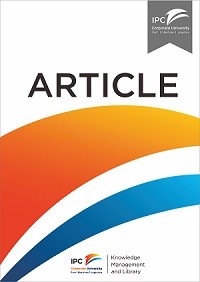Article
Optimal stack layout in a sea container terminal with automated lifting vehicles
Container terminal performance is largely determined by its design decisions, which include the number and type of quay cranes, stack cranes, transport vehicles, vehicle travel path and stack layout.We investigate the orientation of the stack layout (parallel or perpendicular to the quayside) on the throughput time performance of the terminals. Previous studies in this area typically use deterministic optimisation, and a few studies use probabilistic travel times and simulation to analyse the effect of stack layout on terminal throughput times. In this research, we capture the stochasticity with an integrated queuing network modelling approach to analyse the performance of container terminals with parallel stack layout using automated lifting vehicles. Using this analytical model, we investigate 1008 parallel stack layout configurations on throughput times and determine the optimal stack layout configuration. We find that, assuming an identical width of the internal transport area, container terminals with parallel stack layout perform better (from 4–12% in terms of container throughput times) than terminals with a perpendicular stack layout.
Ketersediaan
Informasi Detail
- Judul Seri
-
International Journal of Production Research
- No. Panggil
-
ATC LO GUP o
- Penerbit
- Netherlands : Taylor and Francis., 2017
- Deskripsi Fisik
-
20P
- Bahasa
-
English
- ISBN/ISSN
-
1366-588X
- Klasifikasi
-
LO
- Tipe Isi
-
-
- Tipe Media
-
-
- Tipe Pembawa
-
online resource
- Edisi
-
2017
- Subjek
- Info Detail Spesifik
-
-
- Pernyataan Tanggungjawab
-
Akash Gupta
Versi lain/terkait
| Judul | Edisi | Bahasa |
|---|---|---|
| Simulation And Analysis of Container Terminal Capacity At Multi Terminal Indonesia (MTI) | en | |
| Container Terminal Operations | en |
Lampiran Berkas
Komentar
Anda harus masuk sebelum memberikan komentar

 Karya Umum
Karya Umum  Filsafat
Filsafat  Agama
Agama  Ilmu-ilmu Sosial
Ilmu-ilmu Sosial  Bahasa
Bahasa  Ilmu-ilmu Murni
Ilmu-ilmu Murni  Ilmu-ilmu Terapan
Ilmu-ilmu Terapan  Kesenian, Hiburan, dan Olahraga
Kesenian, Hiburan, dan Olahraga  Kesusastraan
Kesusastraan  Geografi dan Sejarah
Geografi dan Sejarah